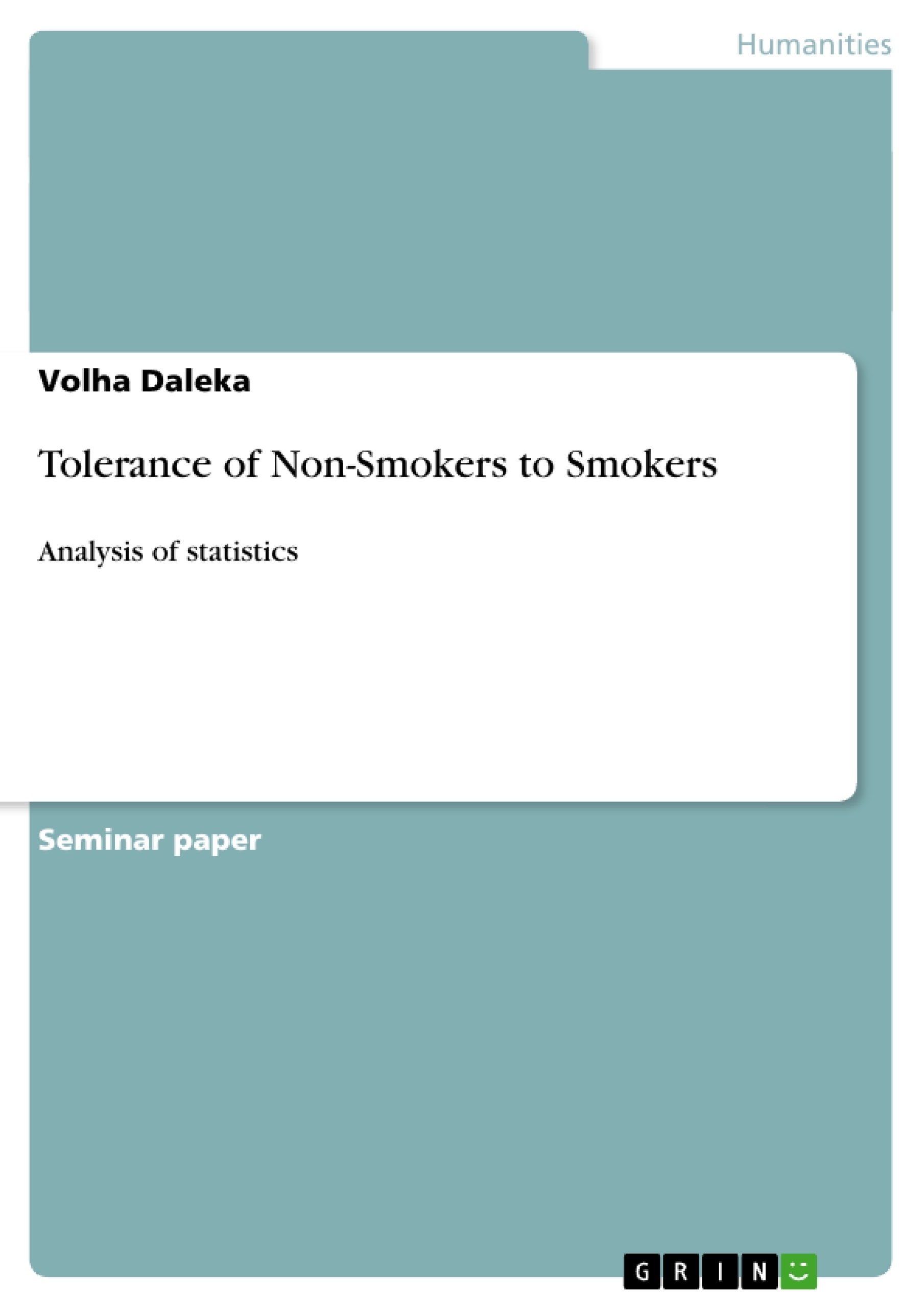The present assignment is an attempt to conduct an empirical social research about tolerance of non-smokers towards smokers. The research is done in the form of a survey of non-smokers and consists of the following steps:
1. setting hypotheses about tolerance of non-smokers towards smokers;
2. creating of a tolerance-index, that measures tolerance of non-smokers;
3. selecting the way of the data collecting as well as developing an appropriate design of the research according to the hypotheses;
4. data collecting;
5. analysis of the collected data by the program Statistical package for the social science (SPSS).
The aims of this work are:
- to measure, how tolerant non-smokers are towards smokers;
- to learn the process of the social research: the ways and possible problems of it;
- to prove hypotheses about tolerance taking into account their reliability as well as validity of the tolerance-index;
- to evaluate the results of the research and to give some proposals as to how the research can be improved and what must be avoided by next researches.
In the end of the assignment the results of the research will be presented as well as the conclusion about the whole work with the proposals regarding possible improvements.
Inhaltsverzeichnis (Table of Contents)
- Introduction
- Setting hypotheses
- Definition of tolerance and tolerance index
- Questions
- The focus group and the way of the data collecting
- Design of the questionnaire
- Analyses of the collected data with SPSS
- Testing the validity of the Tolerance Index
- Testing hypothesis "Women are more tolerant than men"
- Testing hypothesis "Older people are more tolerant than young ones"
- Results and estimation
- Conclusion
- Literature
Zielsetzung und Themenschwerpunkte (Objectives and Key Themes)
This research paper explores tolerance levels of non-smokers towards smokers through an empirical survey. The objectives are to measure the extent of tolerance, understand the process of social research, validate the tolerance index, and analyze the research findings.- Tolerance of non-smokers towards smokers
- Empirical social research methods and challenges
- Validation of a tolerance index
- Gender differences in tolerance
- Age-related variations in tolerance
Zusammenfassung der Kapitel (Chapter Summaries)
- The introduction outlines the purpose of the research, which is to conduct an empirical study on the tolerance of non-smokers towards smokers. It details the research methodology, including setting hypotheses, developing a tolerance index, collecting data, and analyzing it using SPSS.
- The second chapter presents the two hypotheses: women are more tolerant than men, and older people are more tolerant than young ones. These hypotheses will be tested using the developed tolerance index.
- The third chapter defines the concept of tolerance and discusses the challenges of measuring it. It outlines the process of developing a comprehensive definition of tolerance and identifies four key aspects: trouble, understanding, acceptance, and non-discrimination.
Schlüsselwörter (Keywords)
This research focuses on tolerance, specifically in the context of non-smokers' attitudes towards smokers. Key areas of investigation include empirical social research methods, the development and validation of a tolerance index, gender differences in tolerance, and age-related variations in tolerance. The study employs the Statistical Package for the Social Sciences (SPSS) for data analysis.- Quote paper
- Master of Arts (M.A.) Volha Daleka (Author), 2007, Tolerance of Non-Smokers to Smokers, Munich, GRIN Verlag, https://www.grin.com/document/138706



